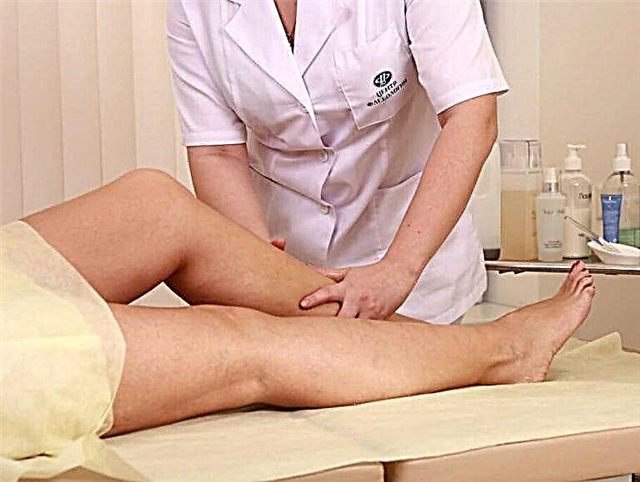
According to doctors, the diagnosis of hearing impairment should be carried out as early as possible, therefore audiological screening is an important examination of newborns. Thanks to the inclusion of such screening in the list of mandatory diagnostic methods, babies even with significant hearing loss have a chance to develop normally, hear and talk. Let's take a closer look at what audio screening is, what its features are, when an audio test is performed in a maternity hospital and why screening is repeated at 3 months.

Why is it carried out?
It is possible to suspect that the baby has hearing problems by his reaction to sounds. Normally, the newborn reacts to loud sounds with reflex swaying, squeezing the eyelids, or spreading the arms to the sides. Already in the second week of life, the baby begins to focus on the sounds he heard, and by the end of the first month of life, he shows the rudiments of an orienting reaction to the sound in the form of fading. At the 2nd month, the baby begins to listen to the sounds and react to them, and then learns to walk.
If the hearing is severely impaired, it will be noticeable at the indicated stages of development. However, in the case of minor violations or one-sided pathology, the mother may not notice that the baby does not hear well.
An audiological examination carried out as early as possible helps to identify even mild disorders and correct them, which prevents the child's speech and social problems in the future. The name of the survey is related to the Latin word “audio” meaning “hearing”.

Doctors say that prosthetics with the use of hearing aids in babies up to six months of age allows babies to develop normal hearing at the level of healthy children... The acquisition of the native language, the accumulation of a passive and active vocabulary, the understanding of grammatical structures and other features of the development of speech in such children pass at a normal pace, which cannot be said about toddlers who were diagnosed at the age of 6-12 months or later. To detect hearing loss as early as possible and ensure timely rehabilitation, doctors conduct a test called "Neonatal audiological screening".
In Russia, such screening is used to diagnose hearing problems in children from risk groups in accordance with Order 108, in force since 1996, but since 2008, all newborns have been examined.


Types of examinations
There are two stages of audiological screening. At the first stage assess the state of the receptor apparatus of the baby's inner ear in order to direct the little patient for further, deeper examination, which is already referred to the second stage of diagnosis. The examinations are non-invasive and safe. They are inexpensive, highly sensitive, quick and easy to use. For accurate objective diagnostics at the first stage of screening, a method has been developed, which is designated by the abbreviation OAE. These letters are deciphered as "otoacoustic emission".
Experts estimate the sensitivity of this method at 90%, and the specificity - in the range of 93–95%. OAE screening may not show the child's auditory neuropathy, which is detected by another, more accurate and sensitive method - recording of auditory potentials.

However, he still detects most cases of hearing problems.
The OAE method is used in all newborns. Usually, such screening is carried out in the hospital on the 3-4th day of the baby's life. It is performed by a neonatologist or an experienced nurse. If for some reason the examination in the maternity hospital was not carried out, it should be done to the baby in the children's clinic to which the newborn is attached. In this case, the screening is done by a pediatrician, ENT doctor or nurse.

How is the examination carried out?
To register otoacoustic emission, use audiometer - a special mobile device that has a probe with a highly sensitive microphone. An earmold is put on the probe before use, as a result of which the sensor becomes similar to a regular earpiece. Next, the probe is hermetically inserted into the baby's external auditory canal. After checking one ear, the manipulation is repeated for the second.
The equipment acts on the hair cells found in the inner ear. The function of these cells is to capture and amplify sound vibrations. In addition, they are able to "respond" to sound waves with their own vibrations. It is the appearance of such vibrations that are generated by hair cells that is called otoacoustic emission.

The device sends a sound pulse to the inner ear and literally in a moment receives a response signal, which was created by hair cells, after which information on the results is displayed on the screen.
In many devices, with a positive result, the word pass is highlighted, which indicates that the impulse has been received and the child has passed the test. If the result is doubtful or negative, the word refer will appear on the screen. It means that the test requires clarification, that is, it is too early to panic and to exclude hearing loss, the test should be repeated at least one more time. A child cannot be immediately diagnosed using the OAE method alone.
The results of the screening are entered into the discharge of the newborn, if the study was carried out in the maternity hospital, or in the medical record, if the hearing was already checked in the children's clinic. Most often, the entry is represented by a plus sign with the designation of each ear. The right one is marked with the letter D, and the left one is marked with the letter S. The result may look like D (+); S (+). It is also often written in this form: D = S (+). In the absence of a reaction of the cells of the inner ear to the stimulus, instead of the plus sign, mark (-).

Features of the
To ensure accuracy and correct results, it is important to consider the following important nuances:
- the study should be carried out in complete silence; the duration of the procedure is 5-15 minutes;
- hearing testing is recommended between feedings; the newborn should be calm, best of all, so that he sleeps;
- the baby should not be allowed to suck on the pacifier during the examination, even if it soothes him; sucking can skew the results.

What's next?
If the newborn has passed the test, then in the future the definition of the UAE is no longer carried out during the first year. If the result is negative, the examination is repeated at the 4th week of life (or a little later, but up to 3 months) in the children's clinic in compliance with all the conditions that are provided for the first screening. If the second test also gave a negative result, the child is sent to the audiology office or center, where he will undergo the second stage of screening.
It includes an examination of the eardrum and external ear, interviews with parents and several additional tests, on the basis of which you can accurately diagnose. The surveys of this stage include impedance measurement, registration of auditory evoked potentials, acoustic reflexometry, tone audiometry.
Particular attention is paid to children from risk groups, for example, if a hereditary pathology is suspected, when, in the presence of hearing impairment in parents, the problem is often detected in a newborn.

Risks are also increased in situations when a woman had a viral or bacterial disease during pregnancy, the expectant mother smoked or drank alcohol. In addition, hearing impairment in infants can be provoked by some medications that a pregnant woman drank both early and late. Among the dangerous drugs, especially "Gentamicin", "Kanamycin", "Amikacin", "Furadonin", the reception of which often leads to deafness.


As a result of a complete examination, the doctor determines the type of hearing loss and its degree. Further information is given for the selection of a hearing aid, as well as the possibility of installing a cochlear implant is assessed. In addition, experts develop a detailed plan for how the child's hearing and speech will be corrected in the first years of life. Parental consultations are required, including psychological ones.

How is it checked in premature babies?
Babies, whose birth occurred much earlier than the required time, are distinguished by physiological immaturity, therefore, audiological screening for them is indicated at different times than for full-term toddlers. If the baby was born at 33-37 weeks of gestation, then the examination is carried out in the first or second week of life. If the gestational age at which labor began was less than 32 weeks, then the hearing test is postponed 2–6 weeks after birth. In case of a negative result, re-screening is carried out in the children's clinic at 3 months, and if required - additionally at 6 and 12 months.

Note that the time for audiological examination is shifted not only for premature babies, but also for some other problems.... For example, if a baby is admitted to intensive care immediately after birth, or if he had to undergo surgery to correct a serious defect, the examination will be performed as soon as the baby's condition is stable. Audioscreening is also done later for LBW babies, newborns with infection or severe postpartum jaundice. The timing for each of these babies is determined individually.
See below for what is audiological newborn screening.



